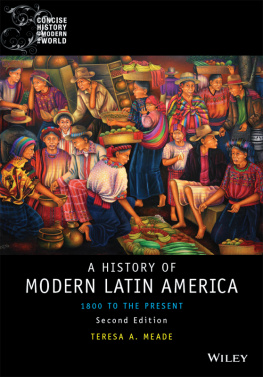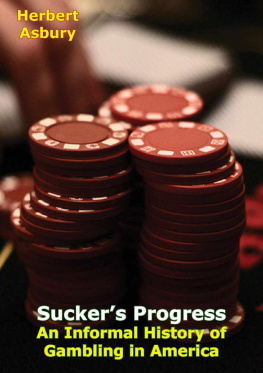()
()
2001 by the Smithsonian Institution
All rights reserved
Library of Congress Cataloging-in-Publication Data Lubar, Steven D.
Legacies : collecting Americas history at the Smithsonian / Steven Lubar and Kathleen M. Kendrick.
p. cm.
Includes bibliographical references (p.). ISBN 1-56098-886-X (alk. paper) ISBN 1-56098-864-9 (pbk.: alk. paper)
eBook ISBN 978-1-935623-48-9
1. National Museum of American History (U.S.)History. 2. Historical museumsUnited States. 3. United StatesCivilization. 4. Material cultureUnited StatesCollection and preservation. 5. AmericanaCollectors and collecting. 6. National characteristics, American. I. Kendrick, Kathleen M. II. National Museum of American History (U.S.). III. Title.
E169.1.L846 2001
973.074753dC21 2001020399
British Library Cataloguing-in-Publication Data available
Smithsonian Institution Press
Caroline Newman, Executive Editor,
Museum Publications
Martha Sewall, Production Manager
Prepared for publication by Archetype Press, Inc.
Washington, D.C.
Diane Maddex, Project Director
Gretchen Smith Mui, Editor
Robert L. Wiser, Designer
Front cover: Table made by Peter Glass, about 1860 (see ).
Endleaves: Duke Ellington score, about 1940 (see ).
).
: Clothespin patent models, 185287. Invention has always been a key part of the National Museum of American Historys story of progress. In 1908 and again in 1926 the Patent Office transferred thousands of patent models to the Smithsonian, including these clothespins.
Back cover: A Handbook to the National Museum, 1886 (see ).
v3.1
Contents
FOREWORD
BY SPENCER R. CREW
INTRODUCTION
WHAT IS WORTH SAVING?
Prop from M*A*S*H, 197283. Following the series finale of M*A*S*H, the Emmy-winning television show depicting a mobile army surgical hospital during the Korean War, the National Museum of American History collected props and two setsthe Swamp and the O.R.the most extensive documentation of a television program undertaken by the museum. Because many of the shows props were authentic to the period, they entered the collections not just as popular culture but also as military and medical artifacts of the Korean War. A special exhibition, M*A*S*H: Binding Up the Wounds, opened in July 1983 and drew record crowds. ()
Foreword
SPENCER R. CREW
DIRECTOR, NATIONAL MUSEUM OF AMERICAN HISTORY
T he Smithsonians National Museum of American History is a place to learn about and connect with the past. Its collections of historical artifacts preserve the memories and experiences of the American people, and each year its exhibitions bring those stories to life for millions of visitors. By choosing what objects to collect and what stories to tell, its curators have helped shape the ways we Americans understand and experience our nations history.
Over the years the museum has collected different objects for different reasons. As views of history change, methods of historical investigation evolve and improve, and the publics understanding of the past matures, new ideas emerge about what is worth saving. Stories and artifacts once considered unimportant might be treasured by later generations, just as the value of once-precious things may fade with time.
The rich diversity of the National Museum of American Historys collections speaks to these changing perspectives. While museum objects tell stories about the people who made, owned, and used them, they also symbolize the interests and values of the people who collected, preserved, and donated them.
The men and women who have collected Americas history at the Smithsonian over the past 150 years have taken their jobs seriously. In their role as collectors, caretakers, and storytellers, they have reflected the hopes and dreams of their fellow Americans. As a result, the museum has become a place not just to discover the past but also to understand the present and ponder the future. As we contemplate the things that earlier generations have saved for us, we are inspired to think about what we are saving today and what might be worth saving in the years to come.
This book, which explores the history of the National Museum of American Historys collections, comes at an opportune moment. A new century offers new promises and possibilities as well as new challenges, both for the institution and the nation. As we chart a path toward the future, knowledge about the past can provide a sense of continuity and purpose. Through the lessons of past struggles and achievements, history can inspire us to take on new challenges and set new standards. It can remind us of what binds us together as Americans, the common and varied threads of experience that have shaped our national identity.
This book encourages all of usmuseum professionals, museumgoers, Americansto think about the legacies we have inherited from the past and those we will pass on to future generations. It also asks us to consider the institutions that look after these legacies and the vital importance of their work. History museums are not only keepers of the past; by investing old stories and old objects with new meanings, they keep the past alive. As places where legacies are continually created, preserved, and passed on, they symbolize the value Americans invest in our nations history.
East Hall, National Museum (now the Arts and Industries Building), about 1890. Visitors to the Smithsonian in the late nineteenth century encountered halls of cultural and technological artifacts from around the world, classified and ordered according to ideas of human progress. As views of the past have changed, museum artifacts have been arranged in new ways to tell new kinds of stories. ()
Acknowledgments
STEVEN LUBAR
KATHLEEN M. KENDRICK
A s with any publication, this book reflects the knowledge, interests, and biases of its authors. Out of the millions of stories at the National Museum of American Historymore than 3.2 million artifacts at last countwe have selected just a few hundred, the ones we found most interesting and revealing. This is a personal rather than an official view of Smithsonian history, a glimpse into its inventory of treasures.
This book is based on research done for a forthcoming exhibition at the National Museum of American History. We are grateful for the early and generous support of Susan and Elihu Rose and for Dr. Roses leadership as program committee chairman of the National Museum of American History Board.
In working on this book we have discussed Smithsonian history and collections with staff members, visiting scholars, and other museum professionals. Among many others who shared their experiences and expertise with us, we wish to thank Richard E. Ahlborn, David K. Allison, Joan Boudreau, Dwight Blocker Bowers, Lonnie G. Bunch III, Judy M. Chelnick, Spencer R. Crew, Michelle Delaney, Richard Doty, Bernard Finn, John Fleckner, Kate Fleming, Shelly Foote, Barbara Franco, Robert Friedel, James B. Gardner, Kathleen Golden, Patricia Gossel, Lisa Kathleen Graddy, Rayna Green, Briann Greenfield, Kate Henderson, Pamela M. Henson, Ellen Roney Hughes, James E. Hughes, Neal Johnson, Paula Johnson, Paul F. Johnston, Jennifer L. Jones, Peggy Kidwell, Ramunas Kondratas, Peter Liebhold, Bonnie Lilienfeld, Joanne Gernstein London, Keith Melder, David D. Miller III, Arthur Molella, Martha Morris, Douglas Mudd, Susan Myers, Shelley Nickles, Cecilia OLeary, Craig Orr, Katherine Ott, Marc Pachter, Shannon Perich, Sarah J. Rittgers, Harry R. Rubenstein, Odette Diaz Schuler, Ann Seeger, Anne M. Serio, Terry Sharrer, David Shayt, Nikki Stanton, Carlene Stephens, Gary Sturm, Lisa Thoerle, Susan Tolbert, Steven C. Turner, Margaret Vining, Deborah J. Warner, Roger White, William Withuhn, William E. Worthington Jr., Helena E. Wright, and William H. Yeingst. Special thanks to the keepers of the accession files at the National Museum of American History, Nancy L. Card and Estelle Florence, for their help in mining that archive for the stories we tell here.














